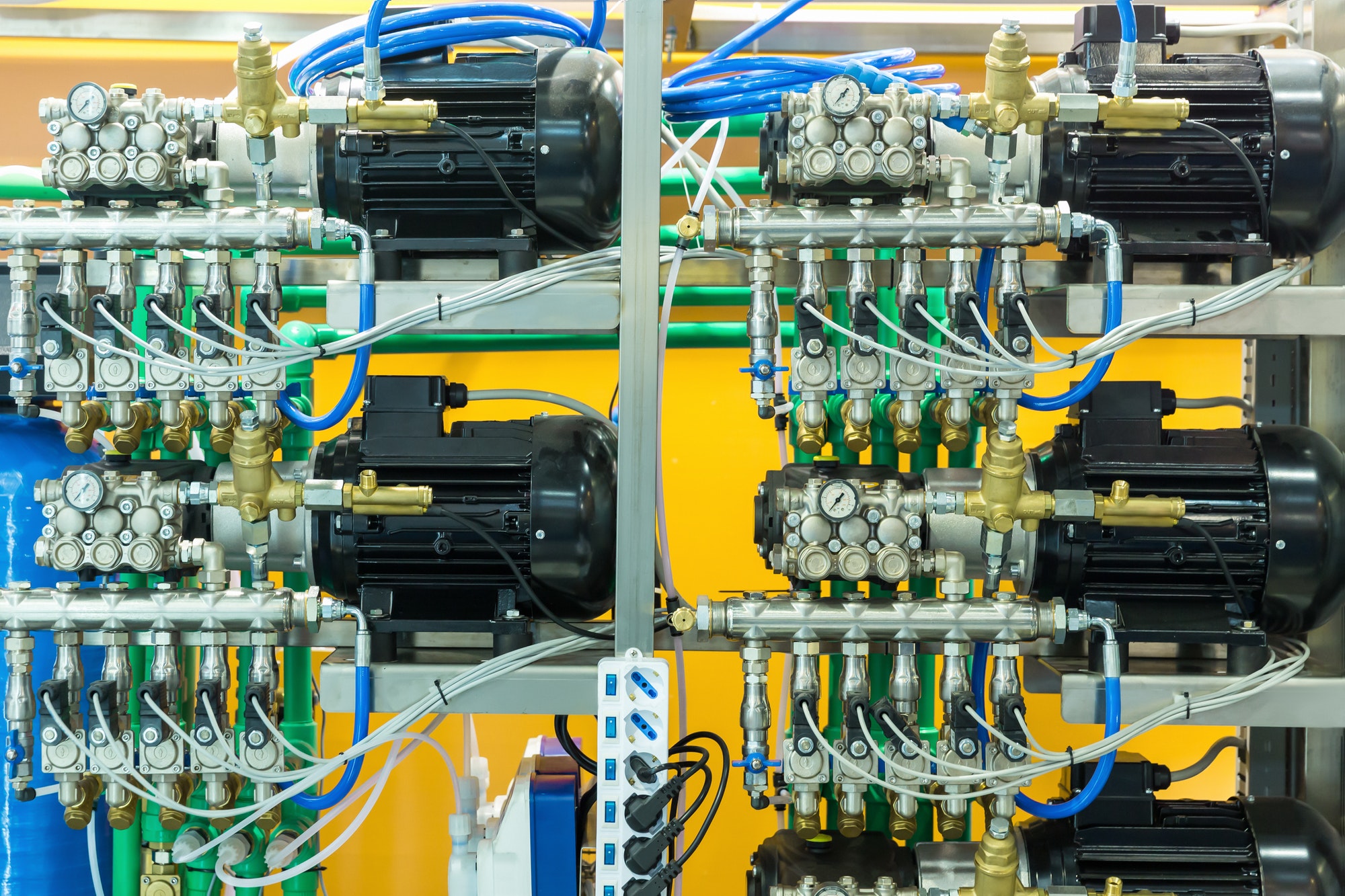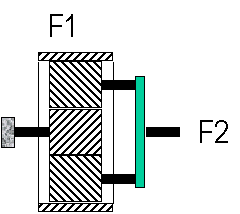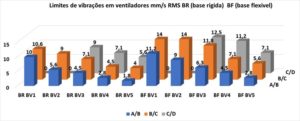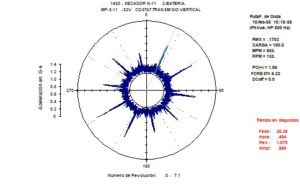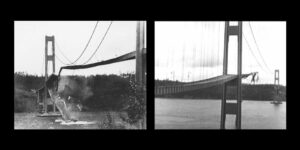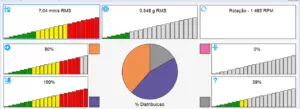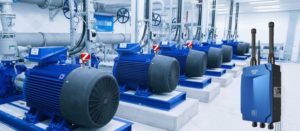Compressed air leaks

The detecting air leaks
The economic operation of a compressed air network requires, mandatorily, the implementation of a program of regular inspections for detecting air leaks comprimido.Seja in industrial production on a large scale, the assembly lines in medium-sized companies or in small workshops – compressed air has an important role in almost every part. And this represents a large proportion of energy needs. The regular check of the compressed air system greatly reduces operating costs of a plant.
The cost of compressed air leaks
Near 30% of the energy used in compressed air systems is lost through leaks. Leaks usually occur in couplings, valves or gates, and hoses, flanges with bolts and defects, corroded pipe connections or. If these leaks remain undetected, even the best compressed air control may not be useful. The compressors have to compensate the pressure loss permanently. Work longer, They need more energy and wear out faster. The result is higher costs. The detection and regular repair leaks, out by holes which usually have only millimeters in size, It contributes to a huge cost savings and improvements in energy efficiency
The use of ultrasound meters
With the use of technology measuring ultrasonic,technicians can locate leaks and eliminate flaws in compressed air systems, gas and vacuum quickly and easily. When a gas escapes through a leak, cause turbulence, which in turn generate ultrasound. These ultrasonic signals are initially inaudible to the human ear. The ultrasound measurement equipment converts the signals into visual information in the measurement device screen and sounds in the headphones, for technical inspection. In addition to the fast and reliable location of compressed air and gas leaks, ultrasound detection devices are also suitable for tightness testing of various systems, wear control in rotating machines and evidence of partial electrical discharges where there damage to the electrical insulation. Check traps and steam valves is another task covered by gauges ultrasonic.
Total cost of operation of a compressed air network

The previous figure details the typical investment that a company needs to make to operate a simple compressed air system. The graph shows that energy is responsible for, up until 75% the total system cost. It's a startling statistic, because the conventional logic does believe that the initial capital costs and maintenance costs, should dominate. Although capital costs for compressors and distribution systems are significant, They are not permanent and only occur once. If a system is specified correctly and maintained well over time, Capital costs can be amortized. A poorly maintained system and leaking continuously drain resources, will have a negative impact on energy and never respond well to requests. An inefficient system, wasting energy, further damages the environment, by additional and unnecessary emissions of greenhouse gases.
The fact that most people do not always think of the air in terms of energy consumption, It explains why so little attention is given to find and fix air leaks. air leaks are expensive. According to the US Department of Energy, average compressed air systems waste, between 25 e 35% air only air leaks.
Ultrassons no ar: how they work?
There are three generic forms of ultrasound technology:
- Pulse / Echo
- power
- Via Aera and solid
Pulse / eco is the most recognized form of ultrasound and is the medical form of ultrasound.
With power ultrasound, as an ultrasonic cleaner, High frequency sound waves are emitted. These high-frequency sound waves have energy and clean parts and various materials.
The ultrasound technology used for detecting air leaks the air is ultrasonography. Ultrasound airborne rely on high-frequency sound waves that are above the normal human hearing range.
Humans are able to receive sound within a frequency range 20 Hz a 20 Kilohertz (KHz), The ultrasonic range starts at 20 KHz. Most ultrasound instruments are able to receive or detect these sound waves of high frequency ultrasound in a frequency range 20 KHz a 100 KHz.
For the detection of leaks, ultrasound, It recommended an ultrasound instrument with frequency tuning capability and suggested frequency setting is 40 kHz. Ultrasound instruments that have a fixed frequency or where the frequency tuning is not available, usually the instrument measures 38 KHz.

There are different high-frequency sound sources that ultrasound instruments detect. For compressed air leak detection and compressed gas, the ultrasound source is turbulence.
Procedure for leak detection with measuring ultrasound
The trails are easy to find, especially with the designated method of "large to small". First, the area is approximately determined using the acoustic alarm in combination with the sound probe airborne L60. Then, the location of air leakage is accurately determined with L60 and the directional tube tip.
1. Connect the ultrasonic device for leak detection. Make sure that is selected. the frequency of 40 kHz.
2. Now, select an appropriate probe and a suitable accessory, depending on the distance and the accessibility of the area to be tested. For distances up to 8 meters, We recommend ear trumpet (you can see in the following figure) in combination with airborne probe L60. This accessory can be removed to areas to 3 meters.

To restrict the location of air leakage, the acoustic horn is used in combination with L60. The accessory allows the detection of leaks from a distance of up to 8 meters.

The most important probe for compressed air leak detection probe is the L60, you can see behind. It is suitable for air leaks detection distances up to 3 meters.
3. Familiar with the test environment. To do, locate the components of the existing compressed air system and delete the extraneous ultrasonic sources the compressed air network. Get used to the existing ambient noise.
4. Now the test begins. Put your headphones and follow the audio and visual signals on the display. Turn the control knob to adjust the volume individually.
5. A louder noise and an increasing level on the display indicate a source of ultrasound and, therefore, an air leak, a compressed air system, gas or vacuum.

6. To limit the potential area of compressed air leak, moving the probe to the right and to the left, up and down. Follow the acoustic signal and significantly reduce the possible location of air leakage. Some simple techniques, but effective barrier against other sources of ultrasound may significantly simplify the detecting air leaks. For example, should close the doors open or use their body to shield the area you are looking for sound strange sources.
7. If you are using the acoustic horn, You can now exchange your equipment and start detection “fine” the escape of compressed air.

8. To identify the exact source of compressed air leakage, You can expand the air directional probe L60 with L63 tube tip, do you see behind. In areas of difficult access can be used flexible probe L63, thanks to its malleability.
Search the area again and concentrate on the sound from the headphones while watching the values on the display. One has to take into account that the ultrasound is reflected from walls and objects around. Therefore, check was located compressed air leak and not a reflection.
9. In areas of difficult access, It should be used the flexible probe L63. A special probe 30 cm long, It becomes part of the system difficult to achieve much easier to be tested.
air leaks are determined accurately by using the directional tube tip to follow it sees. The accessory L60 protects the measurement of lateral and ultrasonic sources can be easily attached and removed with one hand.

10. After finding the location of the compressed air leakage, mark it with a compressed-air leakage label, filled and promote their repair.
As repairing air leaks
Compressed air leaks occur most frequently together in end use and connections. Stop compressed air leak can be as simple as pressing a connection or as complex as replacing faulty equipment, as couplings, links, Pipe sections, hoses, together, drains and traps. In so many cases, The air leaks are caused by incorrect thread seals or improperly applied. Select high quality fittings, disconnect the hose, tubing and install them properly with the appropriate thread sealant.
The non-operating equipment may be an additional source of air leaks. The equipment not in use, They must be isolated with a valve in the distribution system.
Another way to reduce air leaks is to reduce the air pressure system. The lower the pressure differential across an orifice or air escape, lower the leakage rate, so that the reduction in system pressure will result in reducing air leakage rates. Stabilizing the pressure of the system start, at its lowest possible value, minimize the leakage rate of the compressed air system.
Since the air leaks have been repaired, the compressor control system should be re-evaluated and adjusted, if necessary, to realize the full cost savings potential.
Establishment of an air leakage prevention program
A good compressed air leakage prevention program will include the following components:
- Identification (including labeling),
- follow,
- Repair,
- Verification
- Involvement of all
All facilities with compressed air systems must establish an aggressive program to reduce air leakage. a cross team should be formed involving representatives of production.
A compressed air leakage prevention program should be part of an overall program to improve the performance of compressed air systems. Since air leaks are found and repaired, the system should be re-evaluated.
A good leak repair program compressed air system is very important to maintain efficiency, reliability, stability and cost-effectiveness of any compressed air system.

